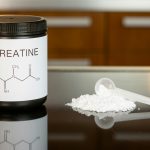According to the US Census Bureau, between 2010 and 2050, the United States is projected to experience rapid growth in its elderly population. Many want and need dedicated personal trainers who understand the aging process and proper injury prevention. Being informed about the risks and considerations when training older adults is tantamount to a successful training relationship.
Falling Risk of Older Adults
Each year, one in every three adults age 65 and older falls. Falls can cause moderate to severe injuries, such as hip fractures and head injuries, and can increase the risk of early death or earlier admission to nursing homes. Fortunately, falls are a public health problem that is largely preventable.1
Many people who fall, even if they are not injured, develop a fear of falling. This fear may cause them to limit their activities, which leads to reduced mobility and loss of physical fitness and, in turn, actually increases their risk of falling.
With the increase in the older population, it becoming evident that exercising and staying fit must be continued as one ages to prevent falls, improve balance, maximize lung and heart capacity, and even help improve memory. Overall exercise can improve the quality and quantity of life of the older adult allowing them to live longer with less disease, less depression, and avoid institutionalization into a nursing home or other facility.
Physiological Changes
When training an older adult in any fitness activity, it is important to understand that physiological changes occur as one ages. For example, the cardiovascular system output decreases by 20-30% by age 65. Maximal oxygen uptake decreases approximately 9% and 5% percent every decade, for sedentary men and women, respectively.2 There is a loss of elasticity of major blood vessels, contributing to increases in blood pressure from stiffening of the vessels.
Lower body muscle loss is more affected than the upper body as a person ages. The muscular system undergoes a 40% loss of muscle mass and 30% decrease in strength by age 70.3 Muscle fibers shorten and production of synovial fluid (lubrication in joints) decreases. As a result, muscle mass and movement become hindered in the lower body. Osteopenia (thin bones) is a consequence as well.
Decreased Sensory Changes
Older persons, especially those who are very sedentary, may have a particularly hard time getting up and down from a chair due to loss of lower body strength and decreased hip mobility. Maximizing lower body strength is essential in optimizing the person’s moving, stepping, and bending ability.
A decrease in-depth perception of the eyes (inability to tell how high or low a step is) can lead to problems climbing stairs or curbs. The sense of touch in the hands and feet may decrease, especially if there is a history of diabetes. Diabetes can damage nerves to the feet and hands creating difficulty when grasping objects or walking on uneven surfaces. Hence, when training someone on a step machine or treadmill, the importance of holding on to safety rails while exercising should be emphasized.
Hearing decreases, especially to high pitched sounds. More often, this happens in men much earlier than women, so speaking at a lower pitch can help when explaining exercises or routines.
Balance decreases, so falls become more likely. This is especially true when bending, lifting, doing moves on one leg or reaching on toes. Training in balance and lower body strength can improve this tremendously. Don’t let these physiological changes deter you from training an older adult. Awareness of changes requires just a little more patience and perception when choosing moves that will improve their cardiovascular health, balance and strength.
Benefits of Exercise for the Older Adult
Enhancing fitness and muscle strength can improve many age-related changes like improving bone density and balance. Functional daily living activities such as reaching, bending, lifting and preventing falls are also benefits. This can increase self-confidence so that the older person’s fear of falling is greatly reduced. With exercise and strength training they can move, bend, reach, and steady themselves much easier and quicker to prevent a fall.
According to G. Scott, it is important that exercise focuses on strength, particularly the legs, at least two times a week, improving balance and making sure exercise becomes more challenging over time.4
Physical activity can increase the quality of life for our aging population. We covered this in part 1 which is all about why you should be training seniors. Here in part 2, specific exercises are explored that will safely and effectively serve your new senior clients.
Overcoming Common Exercise Objections
Many of us find change to be daunting, even anxiety provoking. For individuals over the age of 65, this is very often the factor keeping them rooted in a sedentary lifestyle.
By understanding the commonly reported obstacles this population faces, we can create training programs that are not only safe and fun but will keep them engaged enough to challenge themselves.
At the top of the list of barriers is the fear of discomfort. We take muscle soreness to be normal and commonplace; but for one who is already living with aches and pains or disabilities brought on by any number of mechanical bodily issues, this fear is enough to hold the gym at bay.
Along with this roadblock comes the issue of poor balance, which is so often observed in the elderly population. Fear of falling due to postural imbalances or muscle weakness is a deep-seated trepidation. Understanding these parameters can help us design more effective and inviting workouts.
Exercises and Body Mechanics for Seniors
Here are seven exercises followed by specific instructions based on the physical activity guidelines for older adults that you can implement with your clients.
- Knee extension
- Partial squats against wall
- Bicep curls & tricep extensions
- Lying hip bridges
- Wall push up
- Lateral raises
- Balance
If we are familiar with the everyday challenges faced by deconditioned older individuals, the exercises we choose can easily enhance their lives.
Knee extension exercises not only strengthen the muscles around the joint; they greatly improve balance and reduce fall risk.
Walking becomes easier over time, as does stair climbing. Begin with 10 repetitions per leg of seated knee extensions, and slowly build as strength, flexibility and confidence build. More advanced clients may wish to try ankle weights while executing this move.
Partial squats performed against a wall serve to improve stability by increasing hip flexibility. The strength gained in the hip flexors and quadriceps not only improves walking ability but will make standing up from a chair much easier over time.
Bicep curls and tricep extensions serve to increase strength and flexibility in the arms. Building a strong upper body is essential for individuals pushing walkers or utilizing crutches.
Training these opposing muscle groups together can illustrate to your clients the basic mechanics of arm movements.
Similarly, strengthening shoulders through a seated overhead dumbbell press can mitigate shoulder pain commonly associated with osteoarthritis. This move will also work together with the budding bicep and tricep strength to facilitate lifting grocery bags and suitcases.
Lying Hip Bridges help to strengthen the gluteals, our body’s largest muscle group.
Since typical senior adults live a fairly sedentary lifestyle – which we have the power to change, by the way! – their hip flexors become especially tight.
Lying bridges can therefore also open up the hips and increase mobility at the joint.
One of the best ways to improve overall upper-body strength is the tried and true wall push-up. The virtues of this simple exercise are easy to see, and therefore easy to convince older adults to try.
It requires no special equipment, always a plus! Also, there are many seniors who shy away from floor exercises due to their difficulty in rising. Performed from a standing position, the angle respective to the wall can be shifted as strength increases.
For seniors who are living alone, there is always a need to reach for something from a shelf or out of a cupboard. Strong shoulder muscles are key for such activities.
Lateral raises focus on the deltoids responsible for facilitating this movement. These can be performed without a dumbbell at first, progressing to light weights as competency and self-efficacy increase.
Balance exercises go a long way toward instilling confidence in those for whom ambulatory movement presents challenges. As long as the client holds onto a wall/chair for stability, any form of creative leg raises, leg/ankle circles, rear leg lifts, side leg extensions should be acceptable.
Even toe taps can accomplish a great deal, as long as the leg is lifted high enough in between taps to force the single-leg balance aspect. Encourage clients to “feel” their full weight evenly distributed on the supporting foot, cautioning them not to rely solely upon the ball of the foot, a very common occurrence.
How Personal Trainers Can Help
Once a deconditioned adult tries these simple moves, the fear factor will quickly disappear. The trainer’s positive support coupled with gentle but firm encouragement will result in a fun and fulfilling exercise session for both parties.
How have you encouraged senior adults to try new life-enhancing moves?
References
1. Centers for Disease Control and Prevention National Center for Injury Prevention and Control (NCIPC References)
2. Elia, E.A. (1991). Exercise in the elderly. Clinics in Sports Medicine, 10, 141-155.
3. Rogers, M.A., & Evans, W.J. (1993) Changes in Skeletal Muscles in aging: Effect of exercise training. ( Rogers and Evans, 1993)
4. G. Scott JC. Osteoporosis and hip fractures. Rheumatic Diseases Clinics of North America 1990; 16(3): 717-40.et)







